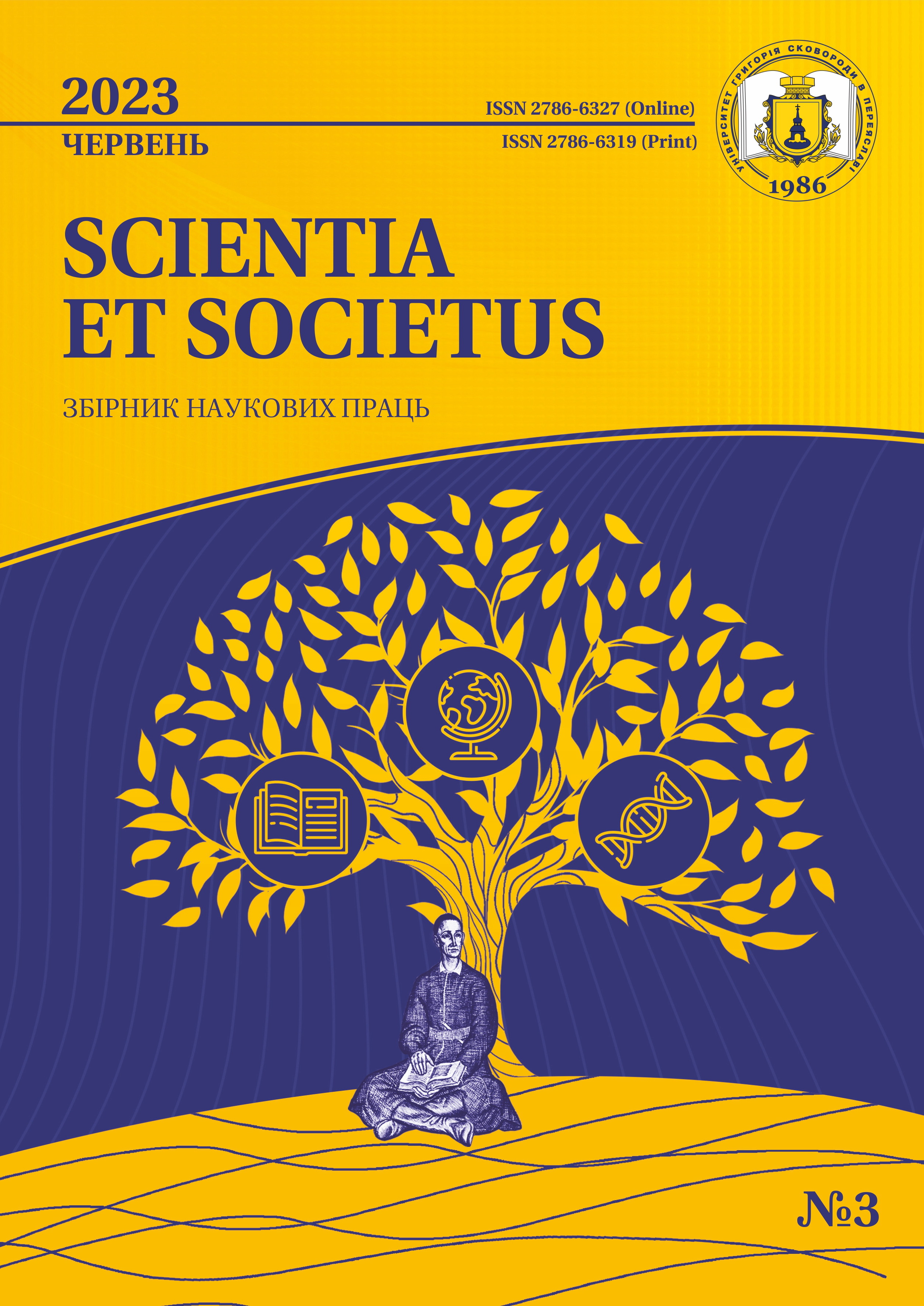INTERNATIONAL EXPERIENCE OF BLENDED LEARNING OF HIGHER EDUCATION STUDENTS
DOI:
https://doi.org/10.31470/2786-6327/2023/3/33-40Keywords:
blended learning, hybrid learning, foreign experience, model, strategies, online learning, students of higher educationAbstract
The article discusses blended learning, which is an approach, a pedagogical and technological model, as well as a methodology that, together with informational technologies, ensures interaction between students and teachers in the classroom. It was found that blended learning consists of three stages: distance learning, mastering practical aspects in the form of day classes and final control. The most common models of blended learning are characterized as: "Face-to-Face Driver", "Rotation", "Flex", "Online Lab", "Self-blend", "Online Driver". It has been proved that the specified models of blended learning are classical, which are limited in their pure form and are combined with others. The specified above list is not the only one, and the classification is quite conditional. Basic approaches to the implementation of a specific blended learning model are important, and the specifics of each discipline and the individual preferences of teachers create prerequisites for the formation of their own effective blended learning models.
The international experience of blended learning education of students of higher education in countries such as Canada (Dalhousie and Waterloo universities), USA (University of Central Florida, Stanford University, Clayton Christen Institute in California, Montclair State University), Germany (University of Bamberg) have been analyzed. Modern strategies of blended learning have beem considered (planning stages of online learning based on the didactic triangle, creating a hybrid campus based on multimodal learning, using Web 2.0 applications, Rocketship, etc.). Next recommendations for the organization of mixed education in Ukraine, taking into account international experience, are proposed: the use of a systemic approach in the field of higher education to attract additional, special university methodical and technical services and non-university state and non-state organizations to the work of teachers and students in a mixed format; application of various models of blended learning and their effective combination; wide use of known and development of new blended learning strategies, taking into account the individual needs of students of higher education; providing a variable (according to the range of created models of combined courses) and accessible (additional support services, educational resources, digital accessibility tools, teacher and student development programs, etc.) educational environment for blended learning.
References
Zadorozhna, I. P. (2015). Vykorystannia dosvidu SShA v orhanizatsii dystantsiinoho ta zmishanoho navchannia u vitchyznianykh universytetakh. [Using the experience of the USA in the organization of distance and blended education in domestic universities]. Naukovi zapysky Ternopilskoho natsionalnoho pedahohichnoho universytetu imeni Volodymyra Hnatiuka. Ser. Pedahohika – Scientific Notes of Ternopil Volodymyr Hnatiuk National Pedagogical University. Series Pedagogy, 3, 138–143. URL: http://dspace.tnpu.edu.ua/bitstream/123456789/5743/1/Zadorozhna.pdf [in Ukrainian].
Ivashchenko, M. & Bykova, T. (2019). Porivnialno-pedahohichnyi analiz vitchyznianoho ta zarubizhnoho dosvidu vprovadzhennia zmishanoho navchannia v osvitnii protses. [Comparative-pedagogical analysis of domestic and foreign experience of introducing blended learning into the educational process]. DNU «Instytut modernizatsii zmistu osvity», 208–223[in Ukrainian].
Klymenko T. I. (2018). Mizhnarodnyi dosvid realizatsii zmishanoho navchannia u vykladanni inozemnykh mov. [International experience of implementing blended learning in teaching foreign languages]. Vykorystannia modeli zmishanoho navchannia pry vykladanni inozemnykh mov: tezy dopovidei [Using the blended learning model in teaching foreign languages: abstracts]. Kyiv.: Kyiv. nats. torh.-ekon. un-t, 55–57 [in Ukrainian].
Lastochkina, O. V. (2022). Zmishane navchannia v osvitnomu seredovyshchi universytetiv Kanady. [Blended learning in the educational environment of Canadian universities]. Perspektyvy ta innovatsii nauky. Ser.:«Pedahohika», «Psykholohiia», «Medytsyna» – Prospects and innovations of science. Series: "Pedagogy", "Psychology", "Medicine", 6 (11), 227–240. URL: http://perspectives.pp.ua/index.php/pis/article/view/1543/1541 [in Ukrainian].
Movchan, L. & Komisarenko N. (2022). Zmishane navchannia yak innovatsiina orhanizatsiia osvitnoho protsesu u zakladakh vyshchoi osvity Ukrainy na osnovi zarubizhnoho dosvidu. [Blended learning as an innovative organization form of the educational process in higher education institutions of Ukraine based on foreign experience]. Aktualni pytannia humanitarnykh nauk – Current issues in the humanities, 48, 2, 189–194 [in Ukrainian].
Osadcha, K. (2022). Dosvid Nimechchyny u zaprovadzhenni stratehii zmishanoho navchannia. [Germany's experience in implementing blended learning strategies]. Osvitolohichnyi dyskurs – Educational discourse, 3-4, 147–162 [in Ukrainian].
Rekomendatsii shchodo vprovadzhennia zmishanoho navchannia u zakladakh fakhovoi peredvyshchoi ta vyshchoi osvity. (2020). [Recommendations regarding the implementation of mixed education in institutions of professional pre-higher and higher education]. MON Ukrainy. URL: https://mon.gov.ua/storage/app/media/vishcha-osvita/2020/zmyshene%20navchanny/zmishanenavchannia-bookletspreads-2.pdf [in Ukrainian].
Tkachuk, H. V. (2018). Zarubizhnyi dosvid realizatsii zmishanoho navchannia. [Foreign experience of implementing of blended learning]. Fizyko-matematychna osvita – Physics and mathematics education, 1 (15), 98–102 [in Ukrainian].
Tkachuk, H. V. (2019). Teoretychni i metodychni zasady praktychno-tekhnichnoi pidhotovky maibutnikh uchyteliv informatyky v umovakh zmishanoho navchannia [Theoretical and methodological principles of practical and technical training of future computer science teachers in the conditions of blended education]: dys… doktora ped. nauk: sp. 13.00.02 – Teoriia ta metodyka navchannia (tekhnichni dystsypliny)/ Natsionalnyi pedahohichnyi universytet imeni M.P.Drahomanova, Kyiv [in Ukrainian].
Chursanova, M., Harieieva, F., & Savchenko, D. (2021). Dosvid vykorystannia tekhnolohii dystantsiinoho navchannia v osvitnomu prostori Yevropy pid chas pandemii Covid-19. [The experience of using distance learning technologies in the educational space of Europe during the Covid-19 pandemic]. Naukovi zapysky Berdianskoho derzhavnoho pedahohichnoho universytetu. Ser.: Pedahohichni nauky – Scientific Notes of Berdiansk State Pedagogical University. Series: Pedagogical sciences, 2, 63–74 [in Ukrainian].
Hirmer, T., & Henrich, A. Lecture Recordings at the University – Analysis and Evaluation of Implementation Possibilities. (2019). Blended Learning:Educational Innovation for Personalized Learning. Vol. 11546. P. 151–163. https://doi.org/10.1007/978-3-030-21562-0_13.











